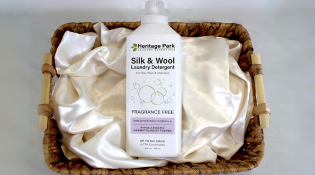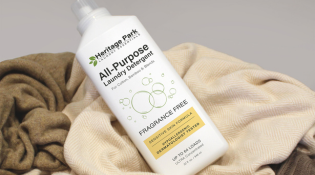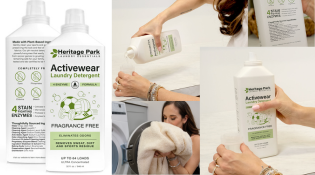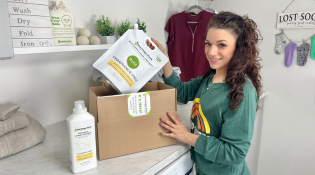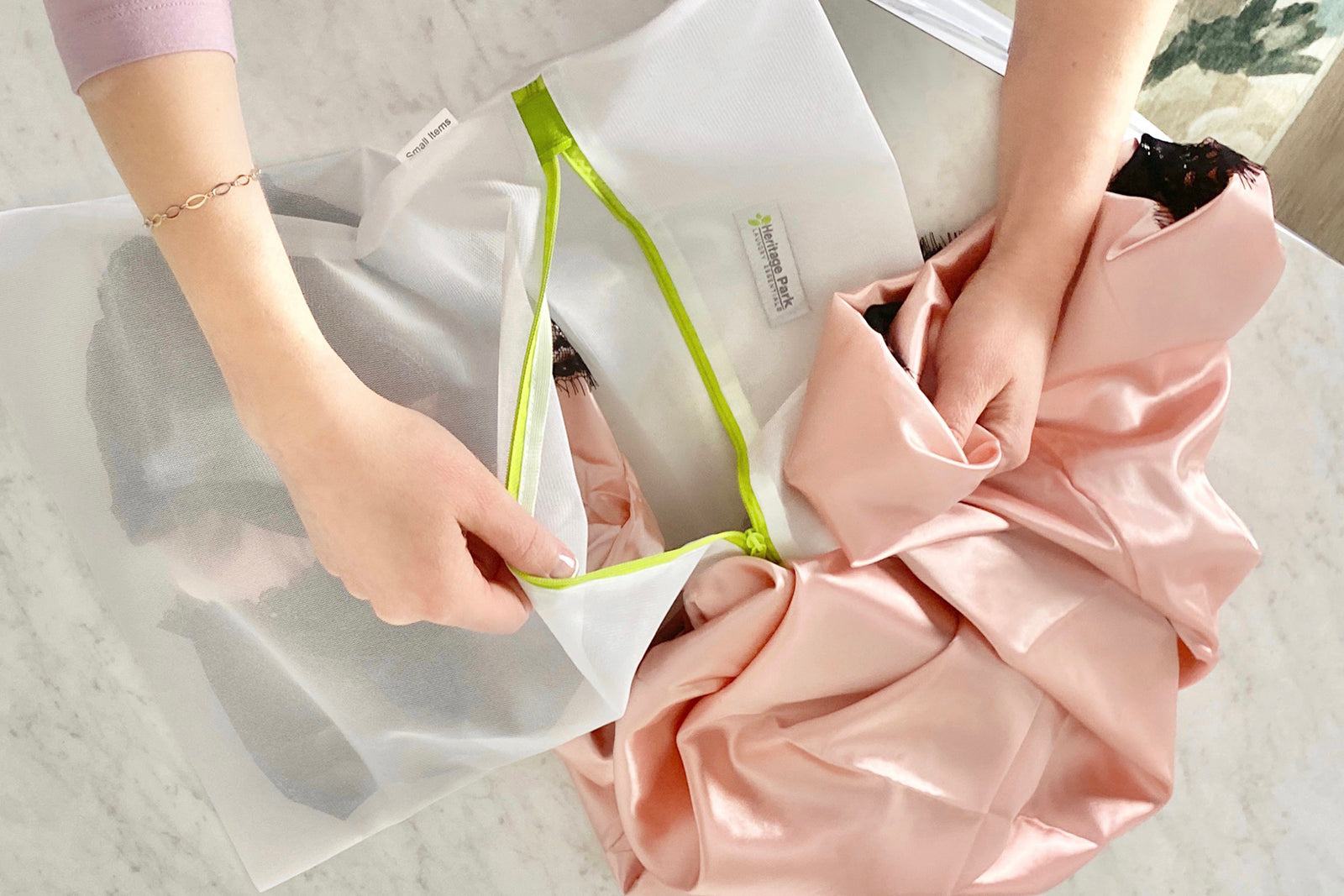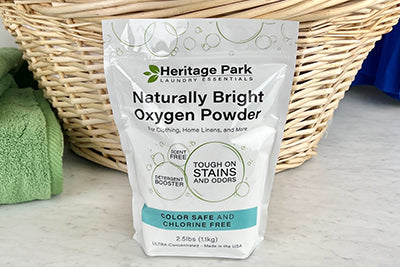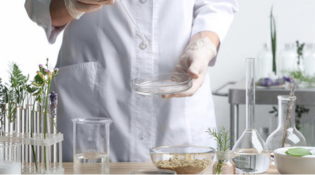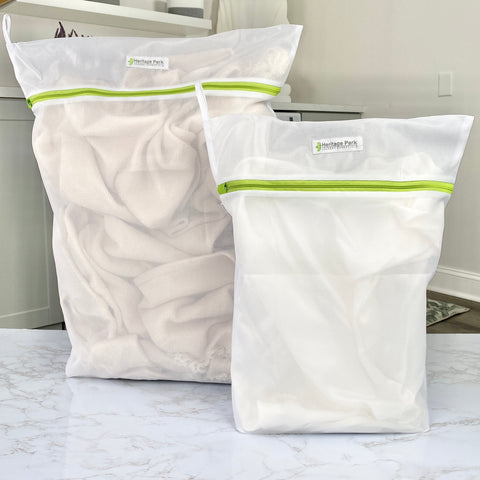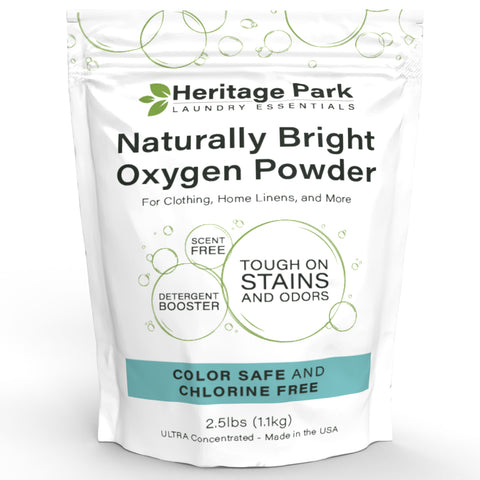Pillow protectors play an important role in keeping pillows and our bedding clean. But they need to be washed regularly to work effectively. This offers step-by-step guidance on how to wash this important bedding accessory.
Inside this Article:
- Pillow Protectors: Protecting Your Bedding and Your Health
- Expert Advice: Never Skip Using a Pillow Protector
- The Benefits of Using a Pillow Protector
- Choose the Right Detergent for Washing Your Pillow Protectors
- Supplies You Need to Wash Your Pillow Protector
- Steps for Washing Your Pillow Protectors
- Step 1: Read the Care Instructions
- Step 2: Pretreat and Presoak Stains
- Step 3: Wash Pillow Protectors in Dedicated Load (Or with Mattress Pads)
- Step 4: Use A Normal Cycle and Warm to Hot Water
- Step 5: Add a Scoop of Naturally Bright Oxygen Powder
- Step 6: Never Use Bleach, Fabric Softener, or Dryer Sheets
- Step 7: Tumble Dry
- Our Clients Also Ask
Pillow Protectors: Protecting Your Bedding and Your Health
Who doesn't love a cozy, comfortable, and clean bed? If you're here reading this blog, you already know how important it is to stay on top of regularly washing your sheets, pillowcases, blankets, and other bedding to keep it fresh, hygienic, and dust-mite free.
But have you thought about your pillow protector lately? Let's face it: pillow protectors are a low-profile bedding accessory. We don't think about them much (if ever). But they serve an essential function: protecting your pillow from dirt, sweat, dust mites, allergens, pollen, hair and skin products, and more. And that means your pillow protectors deserve the same TLC you deliver to the rest of your bedding. So, this blog is your sign:
- Wash your pillow protectors.
- If for some reason you're not using pillow protectors, invest in one today.
Read on to learn more about pillow protection and how to take great care of this unsung bedding hero.

Expert Advice: Never Skip Using a Pillow Protector
We checked in with the home linen experts at Fine Linen and Bath to hear what they had to say about pillow protectors.
"Pillow protectors are a critical layer to any bed," said Erika Smith, Fine Linen and Bath Brand Manager. "A high-quality pillow cover safeguards your pillow itself as well as your pillowcase. It also keeps down dust and allergens that can disrupt your sleep and even become a health hazard."
With that in mind, Smith recommends using pillow protectors for every pillow type and composition: a feather pillow, a synthetic pillow, a latex pillow, a down pillow, hypoallergenic down alternative pillows, wool pillows, microbead pillows, and even memory foam pillows.
Not Sure Which Detergent to Choose?
Not Sure Which Detergent to Choose?
The Benefits of Using a Pillow Protector
Pillow Protectors Keep Bed Pillows Clean
Pillows are susceptible to so many stains, including moisture from sweat and oil from your head; liquid spills; and stains from hair, skin, and beauty products. (Today's ick: That's what causes the discoloration and the yellow and brown stain pattern you sometimes see on a pillow protector. You do NOT want that on your pillow). Use a pillow protector for clean pillows.
Pillow Protectors Extend the Life of Your Pillow
Pillow protectors add an extra layer between the pillowcase and pillow. It will protect your pillow from wear and tear and the yellowing we describe above.
Pillow Protectors Safeguard You from Allergens
Pillow protectors are a night time barrier against dust mites and bed bugs and a host of other allergens like dead skin cells, mold, and even pet dander. Pro tip: if you have an environmental allergy, choose a certified hypoallergenic pillow protector for better sleep.
Pillow Protectors are Easy to Wash
Pillow protectors can be laundered at home in your machine (no need for dry cleaning).
Choose the Right Detergent for Washing Your Pillow Protectors
Heritage Park All-Purpose Laundry Detergent is made to effectively clean and care from cotton, bamboo, microfiber, and blended fabrics. It is a pH-neutral mild detergent made with natural, plant-based ingredients that protect the integrity of fine fabric. At the same time, it contains a proprietary blend of natural cleaning enzymes that break down and remove dirt, sweat, stain and odors from fabric without the use of harsh chemicals.
For a pillow protector, our recommendation is to use our fragrance-free variety, which is also hypoallergenic and dermatologist-tested (learn more about hypoallergenic detergent here). If you prefer a subtle scent to your detergent, choose one of our lightly fragranced options, including Spring Magnolia, Lavender Mist, or Shore Breeze. (Care note: if your pillow protector is made of silk or wool (or any type of silk or wool blend) check if it can be laundered and, if so, use our enzyme-free Silk and Wool Detergent which is made to launder protein-based fabrics).
Supplies You Need to Wash Your Pillow Protector
Gather the following to wash your pillow protector:
- A gentle detergent like Heritage Park All-Purpose Laundry Detergent in Fragrance-Free/Hypoallergenic or one of our lightly scented formulas.
- A washing machine and dryer.
- Mesh laundry bags (optional).
- Enzyme stain remover, or a spray bottle for making your own stain treatment with a 1:1 ratio of Heritage Park All-Purpose Detergent and water.
- Detergent booster like Heritage Park Naturally Bright Oxygen Powder
Steps for Washing Your Pillow Protectors
You should wash your pillow protector at least monthly and any time it is stained or dirty. (Note: if you are following care guidelines, you can also use these instructions for washing throw pillow protectors as well).
Step 1: Read the Care Instructions
Read the care label before beginning the washing process. Fully zip your pillow protector before laundering.
Step 2: Pretreat and Presoak Stains
Pre-treat or pre-soak any sweat or other stains as soon as possible. You can soak in an enzyme stain remover or make a solution of 1:1 of Heritage Park All Purpose Laundry Detergent and water in a spray bottle. You can also pre-treat stains with a small amount of All-Purpose Detergent directly applied to the area. Another option is to pre-soak with a solution of Heritage Park All-Purpose Detergent and our laundry-boosting Naturally Bright Oxygen Powder.
Step 3: Wash Pillow Protectors in Dedicated Load (Or with Mattress Pads)
If it's been some time since you've laundered your pillow protectors, definitely wash them in their own load. For routine monthly laundering, it is ok to wash them along with your mattress pad as long as the washing machine isn't overloaded. This isn't strictly necessary, but using a large mesh laundry bag for your pillow shams will protect these smaller pieces from getting snagged in the machine or tangled among larger items.
Step 4: Use A Normal Cycle and Warm to Hot Water
As a general rule, we (and the official care guidelines) typically recommend using lukewarm water to launder sheets and bedding, as it is best for protecting the fabric fibers. However, when it comes to light-colored cotton and cotton-blend pillow protectors, using hot water on occasion is acceptable (especially if you've not washed your pillow protector recently). Hot water is the best way to kill dust mites and will also maximize the effectiveness of the enzymes. Heritage Park All-Purpose laundry detergent will work in any temperature water including a cold gentle cycle.
Step 5: Add a Scoop of Naturally Bright Oxygen Powder
For cotton, linen, cotton blend, and synthetic pillow protectors, a scoop of Naturally Bright Oxygen Powder will naturally freshen your pillow protector in the wash.
Step 6: Never Use Bleach, Fabric Softener, or Dryer Sheets
These products are totally unnecessary and can seriously damage your pillow protector (and all your bed linen). Learn more about why you should skip the fabric softener and dryer sheets.
Step 7: Tumble Dry
Tumble dry your pillow protector on low heat or hang to dry. (Note, a waterproof pillow cover should be hung to dry).
A final word: pillow covers should be replaced every couple of years or when they are dirty. If your pillow protectors need replacing, you can shop for a new pillow protector here. As always, the Heritage Park clean team is here to answer questions and offer recommendations for taking the very best care of all your household laundry. Feel free to give us a call or drop an email. We are here to help!
Our Clients Also Ask
How do you wash pillow protectors?
Most pillow protectors can easily be machine washed in warm water using Heritage Park All-Purpose Laundry Detergent, which will clean and remove stains while protecting the fabric.
Are you supposed to wash pillow protectors?
YES! Pillow protectors accumulate dirt, sweat, body oils, hair and skin care products, and dust mites. They should absolutely be laundered on a monthly basis.
Can you put pillow covers in the washing machine?
Most pillow protectors or pillow covers can safely be washed in the washing machine.
Can you put pillow protectors in the dryer?
Pending care guidelines, you can tumble dry pillow protectors in the dryer on low heat.
Why do pillow protectors turn yellow?
Pillow protectors turn yellow due to an accumulation of sweat and other body fluids, oil from your scalp and face, and skin care and hair products.
How often should pillow covers be washed?
Wash your pillow cover at regular intervals (at least every two to three months, more often if you have oily hair or sweat a lot) or whenever it is stained or dirty.
Are pillow protectors washable?
Yes, pillow protectors are washable. Keeping your cotton pillow protector clean with regular laundering is the best way to protect both your pillow and your pillow case.
What is the difference between a pillow protector, a pillow cover, and a pillow case?
A pillow protector, or pillow cover, is a plain (usually white or ivory) cover that goes directly on your pillow to protect it from dirt, dust, sweat, oils, lotions, creams, and more. Pillow covers are protective barriers and may be allergy-proof. A pillowcase is the outer cover that goes on your pillow, over the pillow protector, on which you lay your head. Your pillowcase often coordinates with your sheet set.
Are pillow protectors a good idea?
Pillow protectors are a great idea. As the name says, they protect your pillow from damage and build-up of dirt, sweat, oils, creams, lotions, and more. They also help keep dust mites at a minimum.
How do you remove yellow stains from pillow protectors?
There are several methods for removing yellow stains. You can soak the soiled pillow protector in a solution of Heritage Park All-Purpose Laundry Detergent (with enzymes) and Naturally Bright Oxygen Powder (a color-safe oxygen bleach that uses the chemical reaction of oxygen to lift stains out of fabric). You can also treat the stain with a paste of white vinegar and baking soda. Test first in an inconspicuous area for color fastness. Regular washing will help new stains from setting into your pillow protector.


